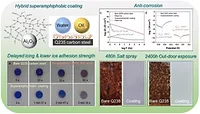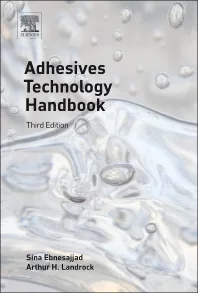GE Presents New Nano-Textured Anti-Icing Technology
NISKAYUNA, NY – GE Global Research presented new research findings on its nano-textured anti-icing surfaces. In addition to dramatically reducing ice adhesion, these surfaces now have been shown to significantly delay the onset of ice formation in simulated atmospheric icing conditions. The team’s findings were presented at the APS’ 2012 March Meeting.
According to the Environmental Protection Agency (EPA), an estimated 25 million gallons of deicing agents are applied to aircraft taking off from U.S. commercial airports each year. In addition, airlines have robust energy intensive heating systems on board to prevent ice formation on airplanes. Compared to standard surfaces, where ice would form almost immediately without the use of these systems, GE’s nano-enabled anti-icing surfaces would delay ice formation for more than a minute on their own.
“Today, airlines and other industry sectors spend hundreds of millions of dollars each year on de-icing and other anti-icing measures,” said Azar Alizadeh, a Materials Scientist at GE Global Research and project lead on the anti-icing surfaces program. “We have successfully engineered new nano surfaces and coatings that readily shed ice and also significantly delay ice formation under extreme conditions. These technologies could one day reduce and possibly even eliminate the need for existing anti-icing measures, maintaining safety while also saving businesses and consumers time and money.”
Alizadeh noted that GE is exploring potential applications of low ice adhesion and anti-icing surfaces and coatings across the company’s business portfolio. One example is wind turbines, where icing on wind blades can create a drag on their rotation. This can greatly diminish the power generating capacity and efficiency of the turbine.
While promising results have been achieved in the lab and in various tests, GE’s nano-enabled anti-icing surfaces and coatings will require further development before they are durable enough and ready for commercial applications.
The development of nanotextured anti-icing surfaces and coatings has been an integral part of GE’s advanced nanotechnology research program at GE Global Research. Scientists were inspired by research on the Lotus plant, which revealed a nanotextured wax on the surface of their leaves that can repel water. GE scientists have successfully engineered new surfaces and coatings and are pursuing many different product applications. Aside from the anti-icing surfaces, GE researchers are developing super water-repellent coatings to improve moisture control in steam turbines to enable higher efficiency. They also are exploring these coatings for certain parts of a gas turbine to reduce fouling. This would enable the turbine to run more efficiently and reduce the number of times it needs to be shut down for maintenance.
GE Global Research is the hub of technology development for all of GE's businesses.
Looking for a reprint of this article?
From high-res PDFs to custom plaques, order your copy today!






